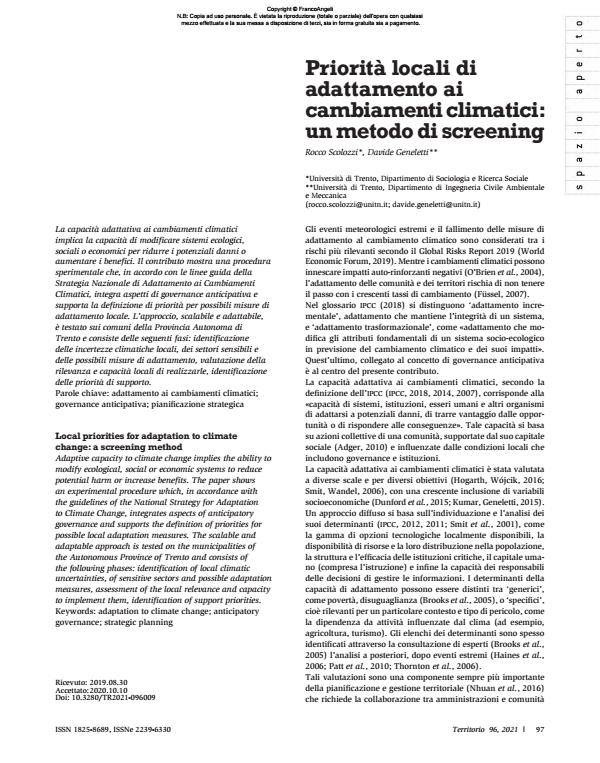Local priorities for adaptation to climate change: a screening method
Journal title TERRITORIO
Author/s Rocco Scolozzi, Davide Geneletti
Publishing Year 2021 Issue 2021/96
Language Italian Pages 11 P. 97-107 File size 995 KB
DOI 10.3280/TR2021-096009
DOI is like a bar code for intellectual property: to have more infomation
click here
Below, you can see the article first page
If you want to buy this article in PDF format, you can do it, following the instructions to buy download credits

FrancoAngeli is member of Publishers International Linking Association, Inc (PILA), a not-for-profit association which run the CrossRef service enabling links to and from online scholarly content.
Adaptive capacity to climate change implies the ability to modify ecological, social or economic systems to reduce potential harm or increase benefits. The paper shows an experimental procedure which, in accordance with the guidelines of the National Strategy for Adaptation to Climate Change, integrates aspects of anticipatory governance and supports the definition of priorities for possible local adaptation measures. The scalable and adaptable approach is tested on the municipalities of the Autonomous Province of Trento and consists of the following phases: identification of local climatic uncertainties, of sensitive sectors and possible adaptation measures, assessment of the local relevance and capacity to implement them, identification of support priorities.
Keywords: adaptation to climate change; anticipatory governance; strategic planning
Rocco Scolozzi, Davide Geneletti, Priorità locali di adattamento ai cambiamenti climatici: un metodo di screening in "TERRITORIO" 96/2021, pp 97-107, DOI: 10.3280/TR2021-096009